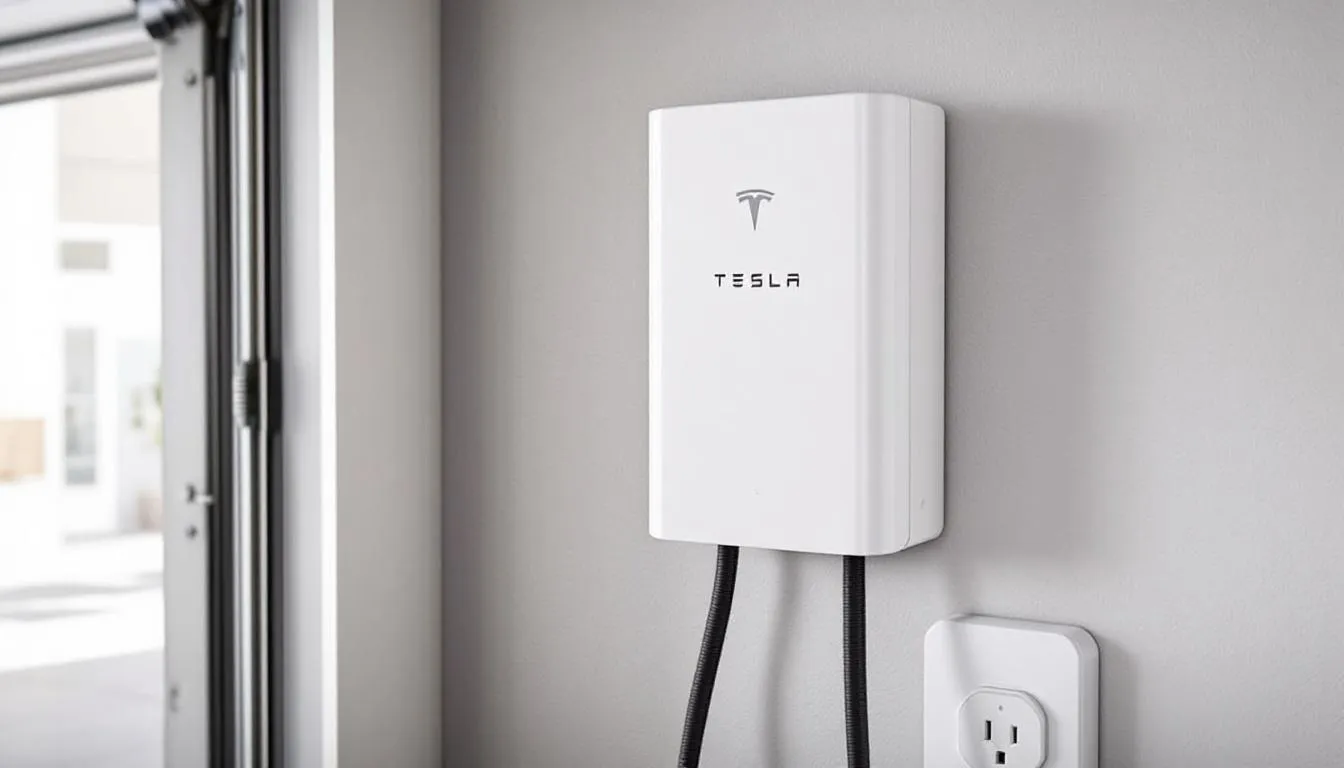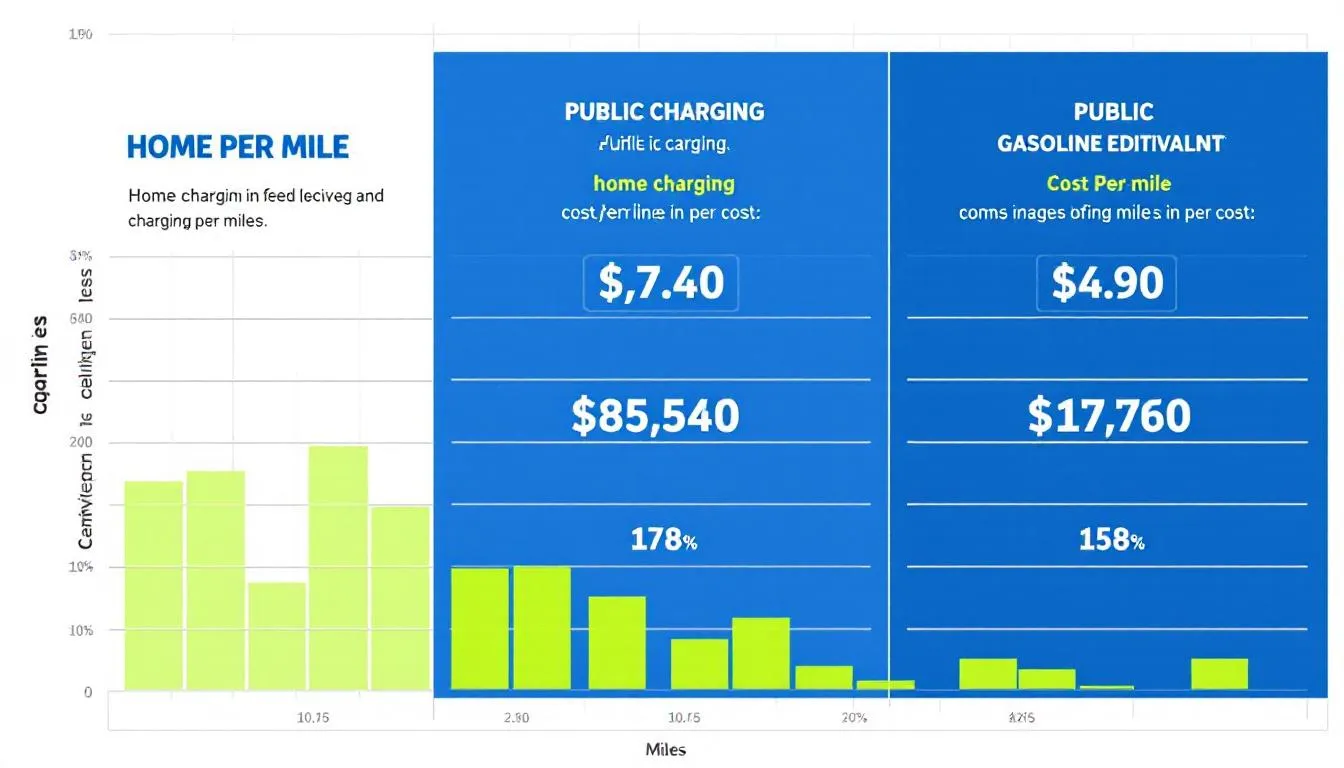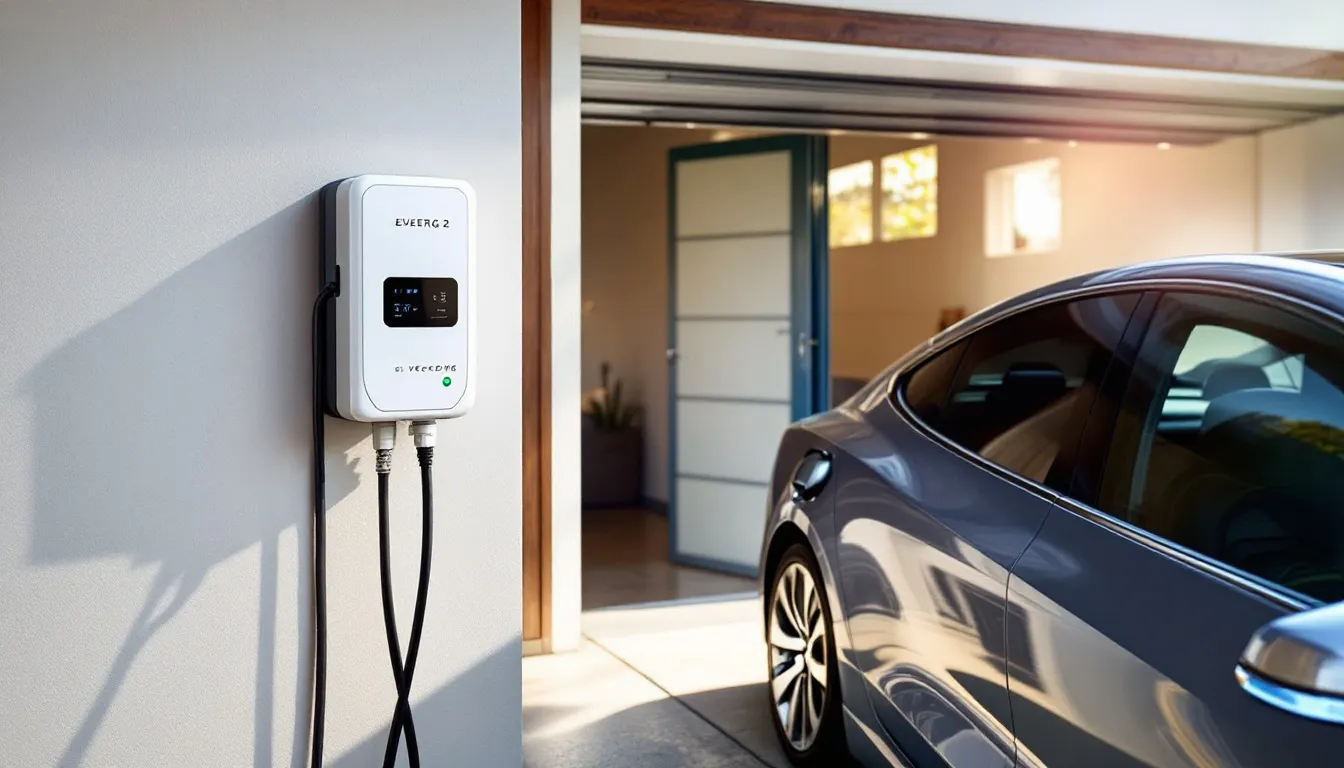Charging Tesla: Complete Guide to Home and Public Charging Options
Discover essential tips for charging your Tesla efficiently and maximizing your electric vehicle's performance.

Key Takeaways
- Tesla vehicles support three charging levels: Level 1 (120V), Level 2 (240V), and Level 3 (DC fast charging/Superchargers)
- Level 2 home charging at 240V provides optimal balance of speed and cost, adding 25-44 miles of range per hour
- Tesla Superchargers can charge from 10-80% in approximately 30-45 minutes, perfect for long-distance travel
- Home charging costs significantly less than public charging and gasoline, averaging $0.13 per kWh in most US regions
- Tesla’s charging network includes over 50,000 Superchargers globally as of 2024
Understanding how to charge your Tesla efficiently can save you hundreds of dollars annually while ensuring you’re never stranded with a dead battery. Whether you’re a new Tesla owner or considering making the switch to electric, mastering the art of charging your vehicle is essential for maximizing both convenience and cost savings.
Tesla drivers have access to the most comprehensive charging ecosystem in the electric vehicle industry, spanning from basic wall outlets to ultra-fast Superchargers. This guide will help you navigate the different charging options, understand the costs involved, and implement best practices that will make charging your Tesla as easy and affordable as possible.
Understanding Tesla Charging Levels
The foundation of effective Tesla charging begins with understanding the three distinct charging levels available to drivers. Each level offers different speeds, requires different equipment, and serves specific use cases that every Tesla owner should know.
Level 1 charging utilizes standard 120V household outlets and represents the slowest but most accessible charging option. Level 2 charging operates on 240V circuits and provides the sweet spot for most home charging scenarios. Level 3, or DC fast charging, encompasses Tesla’s Supercharger network and delivers the fastest charging speeds available.
Here’s a comprehensive comparison of charging speeds across different Tesla models:
Charging LevelVoltagePower OutputModel 3/Y Range AddedModel S/X Range AddedFull Charge TimeLevel 1120V1.4-1.9 kW3-4 miles/hour2-3 miles/hour24+ hoursLevel 2240V3.7-19.2 kW25-44 miles/hour30-52 miles/hour8-12 hoursSupercharger400V+Up to 250 kW1,000+ miles/hour1,000+ miles/hour30-45 minutes
The electrical requirements vary significantly between levels. Level 1 requires only a standard outlet, Level 2 needs a dedicated 240V circuit with appropriate amperage, and Superchargers require specialized DC fast charging infrastructure that only Tesla and select third-party providers can install.
Cost considerations also differ dramatically. Level 1 charging uses your home electricity rate, Level 2 charging offers the lowest cost per mile when done at home, and Supercharging typically costs 2-3 times more than home rates but remains competitive with gasoline prices.
Level 1 Charging: Emergency and Occasional Use
Level 1 charging serves as the foundation of Tesla’s charging ecosystem, though it’s best suited for specific scenarios rather than daily use. Operating at 120V AC with 12-16 amps, this method delivers 1.4-1.9 kW of power output, translating to roughly 3-4 miles of range per hour for most Tesla models.
The technical specifications place Level 1 charging at the bottom of the speed hierarchy, but it requires no special installation. Every Tesla comes with a Mobile Connector Gen 2 that includes a NEMA 5-15 adapter, allowing you to charge from any standard household outlet. This universality makes Level 1 charging invaluable for emergency situations or when no other options exist.
Charging times with Level 1 require patience and planning. A completely depleted Model 3 Standard Range needs approximately 24-30 hours to reach full capacity, while larger battery packs in the Model S can take 40+ hours. These extended periods make Level 1 impractical for drivers who deplete significant range daily.
The best use cases for Level 1 charging include emergency situations where other charging options aren’t available, apartment living without dedicated Level 2 access, and infrequent driving patterns where you add minimal daily miles. Many Tesla drivers keep their Mobile Connector as a backup for unexpected situations or when visiting locations without proper charging infrastructure.
Level 1 charging becomes impractical when your daily driving exceeds 30-40 miles, during cold weather when heating systems reduce efficiency, or when you need quick turnaround times between trips. The slow charging rate simply can’t keep pace with moderate to heavy vehicle use, making it a supplementary rather than primary charging solution.
Level 2 Home Charging: The Sweet Spot
Level 2 charging represents the optimal solution for most Tesla owners, delivering the perfect balance of charging speed, cost efficiency, and convenience. Operating at 240V AC with amperage ranging from 15-80 amps, Level 2 systems can provide 3.7-19.2 kW of power output, dramatically reducing charging times compared to Level 1.
The Tesla Wall Connector Gen 3 stands as the company’s flagship Level 2 solution, offering up to 48 amps of charging current and 11.5 kW of power output for compatible models. This advanced charger features Wi-Fi connectivity, smartphone app control, and the ability to share power between multiple Wall Connectors at the same location.

Installation requirements for Level 2 charging involve several considerations that every Tesla owner should understand. You’ll need a dedicated 240V circuit with appropriate amperage, adequate electrical panel capacity, and proper permits in most jurisdictions. An electrical load calculation ensures your home’s electrical system can handle the additional charging demand safely.
Charging speeds vary significantly between Tesla models due to different onboard charger capacities:
- Model 3 and Model Y: Up to 11.5 kW (48 amps), adding approximately 44 miles of range per hour
- Model S and Model X: Up to 17.2 kW (72 amps), adding approximately 52 miles of range per hour
- Cybertruck: Expected to support higher charging rates with 800V architecture
Alternative Level 2 options include the Tesla Mobile Connector with NEMA 14-50 adapter, which provides up to 40 amps (9.6 kW) and works with RV-style outlets commonly found in garages. Third-party chargers from manufacturers like ChargePoint and JuiceBox offer competitive features and pricing, though Tesla’s Wall Connector provides seamless integration with the vehicle’s software.
Factors Affecting Level 2 Charging Speed
Several variables influence your actual charging speed, and understanding these factors helps optimize your charging setup. The vehicle’s onboard charger capacity sets the maximum charging rate, regardless of the charger’s capability. A 48-amp Wall Connector won’t charge faster than the vehicle’s 40-amp limit if that’s the onboard charger’s maximum.
Electrical circuit amperage directly impacts charging speed. Common circuit sizes include:
- 30A circuit: Supports up to 24A charging (5.7 kW)
- 40A circuit: Supports up to 32A charging (7.7 kW)
- 50A circuit: Supports up to 40A charging (9.6 kW)
- 60A circuit: Supports up to 48A charging (11.5 kW)
Ambient temperature affects battery conditioning and charging efficiency. Cold weather can reduce charging speeds by 20-30% as the battery management system diverts energy to warm the battery pack. Tesla vehicles automatically precondition the battery when scheduled charging is enabled, optimizing charging speeds and battery health.
Battery state of charge significantly influences charging rates. Most Tesla models charge fastest between 10-50% state of charge, with speeds gradually tapering as the battery approaches 80-90% capacity. This tapering protects battery longevity and explains why the final 20% of charging takes disproportionately longer.
Tesla Supercharging Network
Tesla’s Supercharger network represents the gold standard in DC fast charging, transforming long-distance electric vehicle travel from possibility to convenience. With over 50,000 Superchargers across more than 5,000 stations worldwide as of 2024, the network provides Tesla drivers unparalleled access to high-speed charging infrastructure.
Supercharger V3 technology delivers up to 250 kW of DC power directly to compatible Tesla models, bypassing the onboard charger entirely. This direct DC delivery enables charging speeds that add up to 1,000 miles of range per hour during peak charging sessions, though real-world speeds depend on multiple factors including battery temperature, state of charge, and station load.

The charging curve explains why Supercharging speed varies throughout a session. Tesla batteries accept the highest charging rates between 10-50% state of charge, with peak speeds typically occurring around 20-30% charge level. As the battery fills beyond 50%, charging speeds gradually taper to protect battery longevity and prevent overheating.
Real-world charging times for common scenarios include:
- Model 3/Model Y: 27 minutes to charge from 10-80% at V3 Supercharger
- Model S/Model X: 40 minutes to charge from 10-80% at V3 Supercharger
- Adding 200 miles: 15-20 minutes for most models during peak charging rates
Tesla’s navigation system seamlessly integrates Supercharger locations and availability into trip planning. The vehicle automatically routes you through necessary charging stops, preconditions the battery for optimal charging speed, and provides real-time updates on charger availability and estimated charging times.
The network continues expanding with V4 Superchargers beginning deployment in select locations. These next-generation chargers support up to 500 kW charging speeds and 1000A current delivery, though current Tesla models can’t utilize these full speeds. V4 chargers also feature longer cables and credit card readers to accommodate non-Tesla vehicles.
Supercharger Pricing and Payment
Supercharger pricing operates on a per-kWh basis in most locations, with rates varying between $0.25-$0.60 per kWh across different regions and time periods. Urban locations and peak usage times typically command higher rates, while highway locations during off-peak hours offer the most competitive pricing.
Tesla implements time-based billing in certain regions where per-kWh billing isn’t permitted by local regulations. These locations charge by the minute, with different rates for vehicles charging below and above 60 kW to encourage efficient charger use.
Idle fees apply when you remain connected after charging completes and the station is more than 50% occupied. These fees start at $0.50 per minute and double to $1.00 per minute when the station reaches full capacity. The idle fee structure encourages prompt vehicle removal and maintains charger availability for other drivers.
Tesla charging membership programs can provide significant savings for frequent Supercharger users. The monthly subscription reduces per-kWh rates at Superchargers, typically paying for itself if you Supercharge more than 10-15 kWh monthly. Payment processing happens automatically through your Tesla account, though newer stations accept credit cards for non-Tesla vehicles.
Third-Party Charging Networks
The expansion of third-party charging networks provides Tesla drivers with increasing charging options beyond the Supercharger network. Major networks like Electrify America, EVgo, and ChargePoint have deployed thousands of DC fast chargers across North America, many capable of charging Tesla vehicles with the appropriate adapter.
Tesla vehicles require a CCS adapter to access most non-Tesla DC fast chargers, as these networks primarily use the Combined Charging System (CCS) standard. The official Tesla CCS adapter costs $250 and supports charging speeds up to 250 kW, though actual speeds depend on the specific charger and your vehicle’s capabilities.
Major third-party networks offer different advantages and coverage areas:
- Electrify America: Nationwide coverage with 150-350 kW chargers, often located at Walmart and premium shopping centers
- EVgo: Urban focus with extensive metropolitan coverage, partnership with GM and other automakers
- ChargePoint: Largest network with mix of Level 2 and DC fast chargers, strong workplace and destination coverage
Tesla has begun opening select Supercharger stations to other electric vehicles through Magic Dock technology, which provides CCS adapters directly at the charging stall. This initiative represents Tesla’s commitment to accelerating overall EV adoption while generating additional revenue from its charging infrastructure investment.
Third-party charging speeds and pricing vary significantly between networks and locations. Most networks charge between $0.30-$0.50 per kWh, with membership programs offering reduced rates. Charging speeds typically range from 50-250 kW depending on the charger generation and your vehicle’s compatibility.
Mobile apps from each network provider are essential for locating chargers, checking availability, and managing payments. Popular apps include PlugShare for comprehensive charger mapping, ChargePoint for network-specific information, and A Better Routeplanner for trip planning across multiple charging networks.
Charging Costs and Economics
Understanding charging costs helps Tesla drivers maximize their savings while making informed decisions about when and where to charge. Home electricity rates vary significantly across regions, with national averages around $0.13 per kWh, though rates range from under $0.10 in some areas to over $0.30 in others.
Time-of-use rates offer substantial savings opportunities for Tesla owners who can schedule charging during off-peak hours. Many utilities provide reduced rates between 11 PM and 6 AM, with savings of 30-50% compared to peak rates. Tesla vehicles can be programmed to begin charging at specific times to take advantage of these lower rates.

Annual charging cost estimates for average driving patterns:
Driving Miles/YearHome Charging CostSupercharger CostGasoline Equivalent10,000$400-600$1,200-1,800$1,400-2,00015,000$600-900$1,800-2,700$2,100-3,00020,000$800-1,200$2,400-3,600$2,800-4,000
These estimates assume average electricity rates and Tesla Model 3/Y efficiency ratings. Actual costs vary based on local electricity rates, driving patterns, and charging habits.
Workplace charging benefits can dramatically reduce your total charging costs. Many employers offer free charging as an employee benefit, while others provide charging at reduced rates. Federal tax incentives and state rebates continue supporting workplace charging infrastructure installation.
Cost comparison with gasoline reveals significant savings potential. At current national average electricity rates, charging a Tesla costs the equivalent of paying $1.50-2.00 per gallon of gasoline. Even expensive Supercharging rarely exceeds $3.00 per gallon equivalent, providing substantial savings over internal combustion vehicles.
Charging Best Practices
Implementing proper charging practices extends battery life, reduces costs, and ensures reliable vehicle operation. Tesla recommends charging to 80% for daily driving, reserving 90-100% charges for longer trips when the extra range is needed. This practice minimizes battery stress and maintains optimal charging speeds.
Daily charging habits should align with your driving patterns rather than waiting for low battery levels. Tesla batteries perform best when maintained between 20-80% state of charge for regular use. The “charge to 80%” recommendation comes from lithium-ion battery chemistry, where the final 20% of charging generates more heat and stress than the initial 80%.
Long-term storage guidelines become important if you’re leaving your Tesla parked for extended periods. Maintain approximately 50% charge for storage periods exceeding one week, and ensure the vehicle remains plugged in if possible. Tesla vehicles consume small amounts of energy for climate control and computer systems even when parked.
Cold weather charging considerations require special attention in climates with freezing temperatures. Battery performance decreases in cold conditions, reducing both range and charging speeds. Tesla vehicles automatically warm the battery when plugged in and can precondition before departure when using scheduled charging or trip planning features.
Software updates continuously improve charging optimization through over-the-air downloads. Tesla regularly releases updates that enhance charging algorithms, improve battery conditioning, and add new features like enhanced trip planning or charging scheduling. Enable automatic updates to ensure your vehicle benefits from the latest charging improvements.
Scheduled charging setup allows you to take advantage of off-peak electricity rates while ensuring your vehicle is ready when needed. Program your Tesla to begin charging at specific times when electricity rates are lowest, typically late evening or early morning hours. The vehicle will calculate backward from your departure time to ensure adequate charge while maximizing cost savings.
Frequently Asked Questions
How long does it take to fully charge a Tesla at home?
With Level 2 charging (240V), a completely depleted Tesla Model 3 takes 8-12 hours to reach 100% charge, depending on the battery size and charger amperage. Most Tesla owners charge overnight and rarely need a full charge, typically adding 200-300 miles of range in 6-8 hours.
Can I install a Tesla charger if my home has 100-amp electrical service?
Yes, but you may need an electrical panel upgrade depending on your existing load. A 100-amp panel can typically support a 40-amp Tesla charger (9.6 kW) if other electrical usage is moderate. An electrician should perform a load calculation to determine if your panel can handle the additional charging load safely.
Is it bad for the battery to use Superchargers frequently?
Regular Supercharging won’t significantly damage modern Tesla batteries, but it may accelerate degradation compared to slower Level 2 charging. Tesla’s battery management system protects against damage, but for optimal battery longevity, limit Supercharging to long trips and use Level 2 charging for daily needs.
What happens if I lose power at home while my Tesla is charging?
The charging session stops immediately when power is lost, and the charging port automatically unlocks for safety. When power returns, you’ll need to manually restart charging by pressing the charge port button or using the Tesla app. The vehicle’s 12V battery keeps essential systems running even during power outages.
Can I charge my Tesla with solar panels?
Yes, Tesla vehicles can be charged with solar energy through a properly sized solar panel system with battery storage or grid-tie inverter. Tesla’s Powerwall and solar roof products integrate seamlessly with Tesla vehicles, allowing you to charge using clean energy and potentially achieve energy independence for both home and transportation needs.From panel upgrades to EV charger installs, we handle it all across LA County. Skip the forms—talk to a real expert in seconds. Dial +1 (424) 238-3889 to book your service today.




